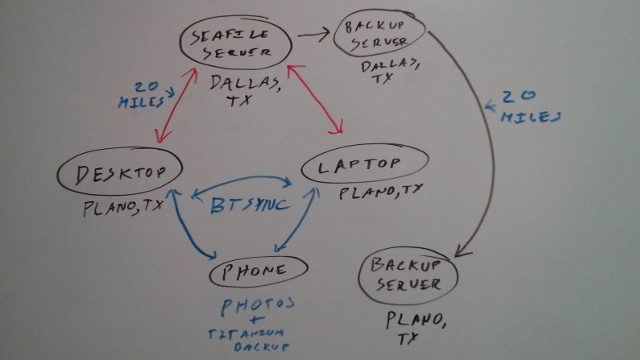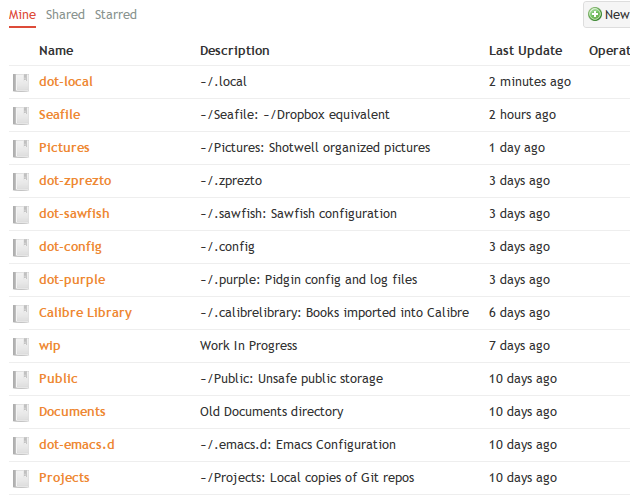The automated backup strategy that I’ve been using for the past three or four years was very solid, and it served me very well. I was using rdiff-backup to perform daily backups of my entire home directory to local storage, and I was using Duplicity to create and upload encrypted backups of my most important data to a remote server every day.
This was very stable and very bandwidth-efficient, but each backup only ran once a day, and rdiff-backup and Duplicity are both very heavy on I/O and CPU.
Moving my backups to the cloud
I started exploring various self-hosted cloud storage solutions a few months ago. After much consideration, I decided to use Seafile as my cloud storage solution. I had to rearrange my home directory a little to get everything important synced up to my Seafile server, but once I did, I realized that I didn’t need my old backup plan anymore!

A good backup plan needs to include history. It might take days or even weeks to notice a corrupt or missing file. It is important to be able go back into your backup history and recover that file Seafile definitely has me covered in this case. Seafile lets me set the number of days of history I want to hang on to for each individual library. My rdiff-backup and Duplicity backups only recorded a snapshot of my files once each day, while Seafile does that constantly throughout the day as files change. I consider that to be a very big win.
A good backup plan also needs to move your files off-site Seafile has me covered here. Changes to my files are pushed up to my server almost immediately after I save them. My computer could get fried right now, and I would probably only lose this paragraph.

Seafile doesn’t just give me a backup of my data, though. It is also keeping my important data synchronized between my laptop and my desktop. That not only gives me an extra full copy of my current data, but it also means that I don’t have to remember to take files with me when I leave the house.
Don’t forget to back up your self-hosted cloud!
In my opinion, a proper cloud-based storage solution has redundancy. Of the self-hosted cloud storage solutions that I checked out, the only ones that offered any real redundancy didn’t have client-side encryption. That made them pretty useless for me.
I don’t care if my Seafile server becomes unavailable for a while, but it is very important to me that I don’t lose all history that it is storing for me. I have some existing infrastructure in place to help keep my Seafile server safe.
- My Seafile virtual server is stored on a RAID 10 to help protect against hardware failures
- All my virtual servers are backed up to another local server every night
- Those nightly backups are then synced off-site
This means that two copies of my current data exist at almost any given time: one on my local machine, and one on the Seafile server. I get even more redundancy if my laptop is powered up. It also means that my backup history is stored in three places: on the Seafile server, on the local backup server, and on the off-site backup server.
I’m probably doing a better job of managing my backups than most corporations at this point.

How safe is Seafile?
I’ve only been running Seafile for a little more than a month so far. I haven’t had any data loss, and I’ve been able to pull files out of my history. One month isn’t a long time. I’ll definitely report back regularly to let everyone know how things are going.
So far, though, things are looking pretty good!